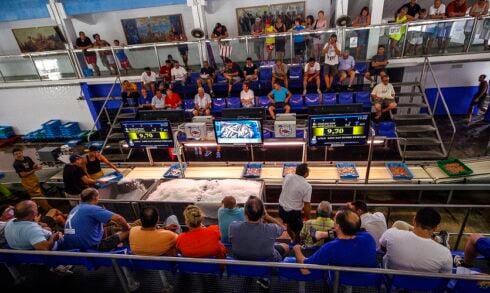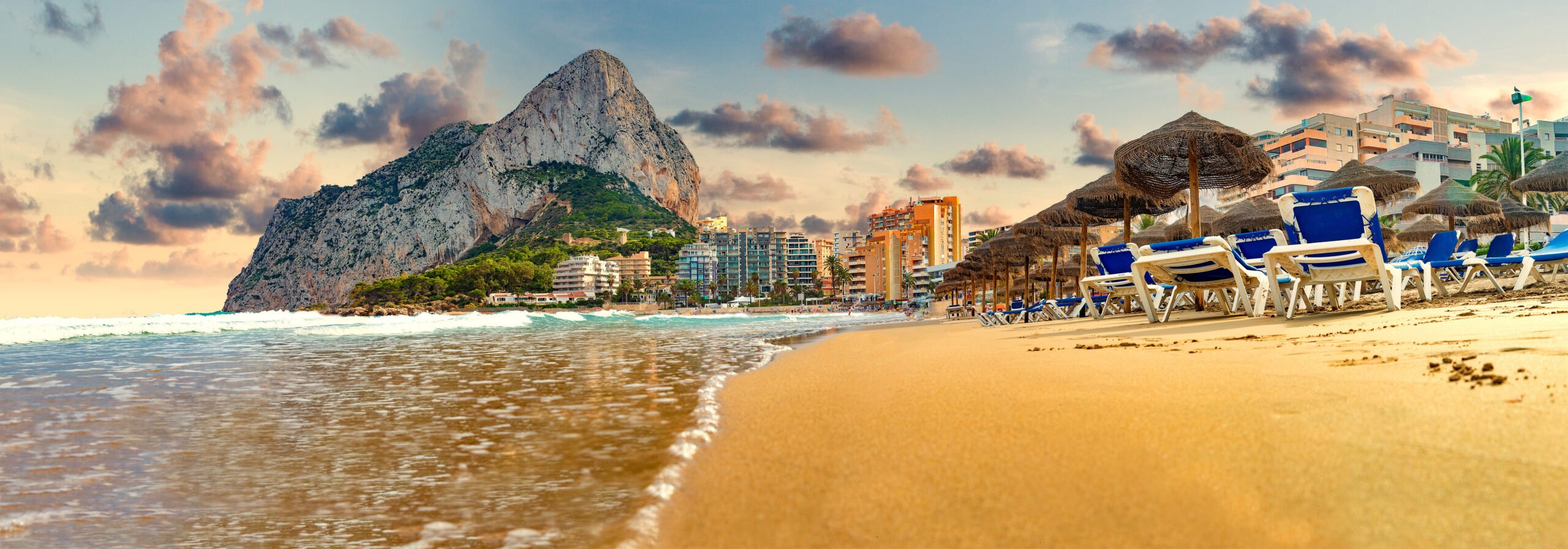THE first time I visited Calpe, I was convinced I’d walked into the wrong country. It wasn’t the sun that threw me off, or even the Peñon de Ifach looming over the bay like some monumental guardian – it was the voices.
English drifted from a bakery queue, Dutch from a nearby café, and German from a couple arguing amiably over sunscreen. Then someone greeted me in Valencian, and I realised this wasn’t confusion – it was Calpe.
And it turns out my ears weren’t exaggerating. The town recently crossed a quietly astonishing milestone: foreign nationals now make up over half of its population. More than 53%, to be exact – meaning Spanish residents are technically the minority in this stretch of the Costa Blanca. It’s the only town in Spain with more than 20,000 people to reach that level of international mix. But statistics don’t quite capture it. You feel it on the street. The conversations switch languages mid-sentence, and the menus carry three translations as naturally as a trilingual child.
Calpe, once a sleepy fishing town, now beats to a global rhythm. And this shift has changed everything – not just the faces in its markets, but the entire logic of how it lives and breathes. For decades, coastal towns here thrived on a seasonal heartbeat: crowded summers, empty winters. But Calpe has broken that cycle. The foreign residents didn’t come for a fortnight; they came to stay. They needed schools, doctors, plumbers, yoga teachers. They didn’t vanish in October.
So now, even on a chilly Wednesday in January, you’ll find restaurants open, cyclists speeding past the promenade, and the scent of fresh coffee floating from bakeries that once shuttered for the season.
This year-round pulse has sparked a quiet revolution. The town’s mild winters and mountainous backdrop make it a magnet for cyclists and hikers escaping northern cold. You see them every morning, groups in bright Lycra pedalling through the mist toward the Sierra de Oltà, the clatter of gears echoing against limestone cliffs. The air smells faintly of sea salt and new tarmac.
But life here isn’t just about sport. It’s about balance – a kind of comfortable coexistence between Spanish tradition and European convenience.











There’s a language exchange in the main square every Thursday, chatter spilling from tables like music. Hiking clubs meet at dawn by the Peñon’s trailhead. You’ll even hear a bit of Russian at the market when haggling over oranges. Yet beneath this international blend, Calpe still hums with its Valencian roots – the smell of paella on a Sunday, the rhythmic thump of fiestas, the patience of fishermen mending nets by the port.
Still, this success brings growing pains. The population density near the seafront can feel suffocating in August, and parking is a local legend in itself. The council has started tackling these pressures: better waste management, greener transport options, and even a beach smoking ban (which, to be honest, makes the sea air cleaner and the sand less of a cigarette graveyard). These aren’t glamorous reforms, but they signal something rare for a tourist town – long-term thinking.
And maybe that’s the real story. Calpe’s charm isn’t in pretending to be Spanish or international, old or modern – it’s in managing to be all of it at once. The Rock stands immovable, yes, but the community below it shifts and adapts like the tide. And on certain evenings, when the sun slips behind the Peñón and the sky turns a slow copper, you can’t help wondering if this small town on the Costa Blanca hasn’t quietly reinvented what Europe itself looks like – a place where nobody quite belongs everywhere, yet everyone belongs somewhere.
Peñon and Pink
You can’t really understand Calpe until you’ve climbed the Peñon. From afar, it looks manageable – like a giant’s knuckle rising from the sea. Up close, it’s something else entirely. I still remember my first climb: the screech of cicadas, the smell of hot dust, the wind whipping grit into my mouth as I gripped a rusted chain and thought, perhaps foolishly, “How hard can it be?”
The path starts gently enough, winding through rosemary and pine. There’s a point about halfway up where you hit the tunnel – a rough, unlit bore through solid limestone. It’s cool and damp, the air thick with the smell of stone and moss. You emerge blinking into sunlight, only to realise the real climb is still ahead: steep, narrow, and scattered with loose rock. Yet every step brings a bigger view, until finally you reach the summit – 332 metres above the sea – where the world unravels in every direction. Altea shimmers to the south, Moraira to the north, and far below, the Mediterranean stretches like polished glass.
Access past the tunnel is now limited, which makes sense. Too many feet wore down the rock. Visitors must book online, which, depending on your patience for bureaucracy, is either a minor inconvenience or an environmental victory. Still, it’s worth it. The Peñon isn’t just a climb; it’s a conversation with the landscape. You see gulls riding thermals, and if you’re lucky, a kestrel hovering mid-air like a thought that refuses to land.
Just across the road, Las Salinas offers the perfect counterpoint – horizontal calm after vertical effort. The salt lake glimmers like liquid silver, sometimes pink, depending on the season and the whims of its microorganisms. In the late afternoon, when the light hits it right, the reflection of the Peñón on that rosy water feels almost unreal, as if nature decided to play at being an artist.
Once used for salt production, Las Salinas is now a protected habitat, home to waders and flamingos. You’ll spot them standing like question marks in the shallows, their pale feathers tinged with blush. The soundscape here is delicate – soft wind, occasional car, and the odd squawk of a startled bird. It smells faintly briny, like tears drying on skin.
Both the Peñon and the salt flats are fragile, so locals ask visitors to tread gently – stay on marked paths, keep voices low, and take your rubbish home. It’s not about rules; it’s about respect. After all, these landscapes existed long before us and, if treated right, will outlast our noise and sunscreen and selfies.
And standing there between rock and water, you can’t help noticing how these two opposites – the towering vertical and the shimmering flat – define Calpe’s character. It’s a town built between extremes: stone and sea, noise and silence, old and new. Which makes you wonder, as the flamingos lift off in slow pink arcs, whether balance is ever really still – or if it’s just the art of constant adjustment.
Bathing in history
It’s hard not to grin when someone tells you that Calpe’s Queen’s Baths were never actually baths. I first went expecting marble pools and mosaics, maybe even a faint echo of some long-dead empress lounging in the steam. Instead, I found rocky tidal pools, rough and sunlit, carved straight into the coast. Turns out, the Romans weren’t bathing here at all – they were farming fish.
The Baños de la Reina date back nearly two thousand years, a complex of stone basins connected by little canals where sea water flowed in and out. Standing on the edge, you can still see the grooves cut for sluice gates. If you crouch low enough, you’ll catch the faint smell of salt and seaweed, the same scent Roman workers must’ve known.
And yes, you can still swim there, right beside those ancient cuts in the rock, floating where once mullet and bass fattened for the empire’s tables. There’s something almost cheeky about that – the Mediterranean shrugging at time.
Just inland, the Old Town is a different story altogether – narrow lanes, worn steps, flashes of colour from painted walls and flags. The Torreó de la Peça stands sentinel, a reminder of the town’s medieval defences. And yet, just beyond its shadow, a staircase painted like the Spanish flag draws Instagrammers like moths. The clash between centuries feels deliberate, like Calpe refuses to choose which version of itself to present.
One evening, wandering through the cobbles, I stopped at a bar where locals argued about football while a British couple asked for directions in halting Spanish. A mural of a woman’s face stretched across the wall, her eyes bright blue and slightly too large – the artist’s mark of modernity. That mix, that layering, is Calpe in miniature: ancient engineering underfoot, street art overhead, and the sound of half a dozen accents bouncing off the stones.
The link between past and present runs deeper than aesthetics. The Romans built their fortune on salt and fish. Calpe still trades in both. From the Baños to the fish market, the same sea provides. It’s continuity disguised as change. And maybe that’s why this town feels so grounded – its roots aren’t in nostalgia but in persistence.
The freshest catch
If you want to feel Calpe’s heartbeat, skip the museum and head to the port at five in the afternoon. The fishing boats return just as the light begins to mellow, their engines grumbling like tired beasts. The air smells of diesel, salt, and wet rope. It’s loud, messy, and completely unromantic – which is exactly why it’s perfect.
At La Lonja, the daily fish auction begins. Fishermen haul in crates of gamba, squid, and gleaming dorada, while buyers watch from a glass gallery above, fingers twitching on electronic pads. The speed of it is astonishing – bids flash, numbers change, and within minutes, today’s catch is already spoken for. Below, you hear the thud of crates, the scrape of metal on tile, and the constant low murmur of negotiation.
Visitors can watch, though you’re wisely kept out of the way. The best part comes after, when the restaurants by Cantal Roig beach fire up their grills. If you time it right, you can eat the same fish you saw unloaded an hour earlier.
Calpe doesn’t pretend. It works. It sweats. It serves food that’s better than it looks because it hasn’t been polished for tourists. The prawns are scarlet and sweet, the arroz del senyoret rich and sticky. Eat with your hands, wipe your mouth on a napkin, and watch the sky turn from gold to violet over the Peñón.
And maybe that’s the perfect ending to a Calpe day – not the climb, not the history, but the table. Sitting there, salt on your lips, sun on your skin, watching boats bob against their reflections, you realise that this small town manages to be ancient and modern, foreign and familiar, noisy and peaceful all at once, as if the Peñon itself breathes out a rhythm that everyone unconsciously follows – and isn’t that, in its quiet way, what every town is trying to become?
Click here to read more Olive Press Travel News from The Olive Press.
